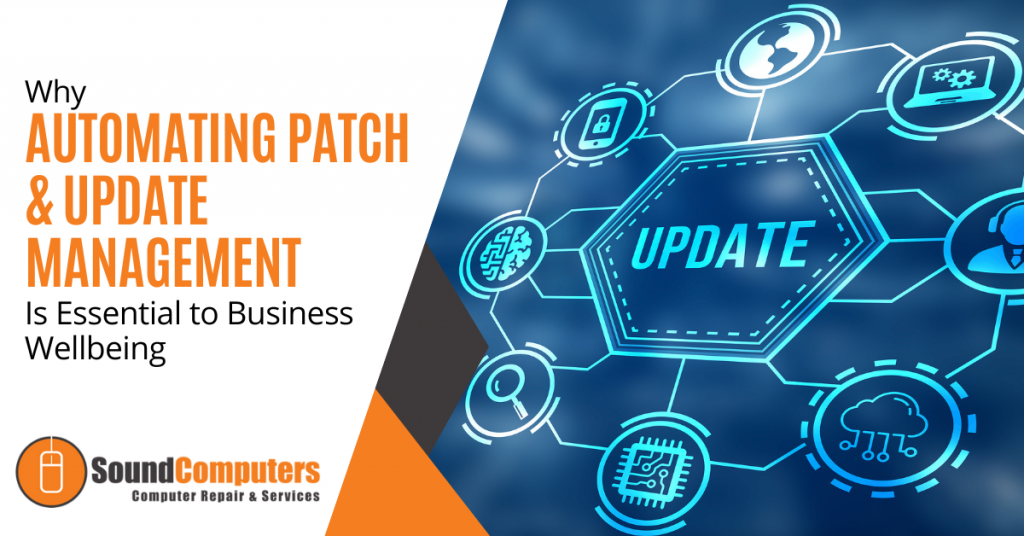
You know how it goes. We are working on our PC’s at one moment and enjoying how things are going. The next moment there is a notification that pings. You need to allow the most recent updates. Without thinking, we hit the “remind me later” button. We say we are busy and there is so much to do today. We say we can always do it later.
We all do it and seem to get away with it. However, this seemingly innocuous act can have major ramifications for our homes and businesses.
In a time when cyber threats are as prevalent as they are today, keeping PC’s updated with the most recent security patches is key. This is especially true for businesses. After all, according to Threatpost, 82% of cyberattacks against U.S. businesses in the first quarter of 2022 resulted from hackers exploiting patchable vulnerabilities.
But what is patch management?
Patch Management Explained
Patch management refers to an IT infrastructure management activity in which IT operations managers or administrators must recognize and rank certain IT activities according to an order of importance for execution. These activities include patching requirements, procuring and testing fixes or patches and installing them to update, amend or restore existing software and code.
Software manufacturers and companies often supply patches to resolve security vulnerabilities or bug fixes. These error fixers also help improve or add new features. Patch management entails staying up to date on newly released patches, choosing which will suit each hardware and software, testing the changes, validating their installation and recording the process.
Enterprise IT specialists usually handle this process. In other circumstances, DevOps teams may occasionally join the process. Note that many IT service providers offer patch management services.
However, it can be strenuous for IT teams to continually run patch management processes by themselves when there might be more important things scheduled on the calendar. This is where automating patch and update management proves beneficial.
How Does Automating Patch and Update Management Help Businesses?
There are numerous ways automating patch & update management proves essential to business well-being and here are some of them:
Increased Productivity in the IT Department
One department where productivity is easily accessed is the IT department. When handling patch management processes, IT operation managers must know how many working hours and personnel will be needed to patch systems manually.
By automating patch and update management, you can save the company money and free up more staff for more pressing IT tasks.
The hassle and time to execute manual patching can be daunting. This is especially true for businesses having about twenty or more work PC’s connected to their network. If companies of this nature do not utilize automating patch and update management, it is either they confine patch management to core networks and servers or do not run patch management at all.
It Supports BYOD Policy
Allowing company staff to bring their devices to work (BYOD) is gaining popularity among businesses. Why? Because it boosts worker productivity while saving firms money by removing the need to purchase equipment for staff.
BYOD policies can also be a nightmare for IT departments and, consequently, the whole company. How? It allows easy exchange of info between personal staff hardware and company hardware which could easily sabotage company files and data. With automated patch management, companies are guaranteed safe with employee devices no matter where they use them (in or out of the office).
Increased Company Productivity
When patch management is efficiently and systematically implemented throughout a company’s network, company productivity improves in numerous ways. Patches frequently introduce performance enhancements for the corresponding software alongside software crashing and problem fixes. When these difficulties are resolved, productivity gets a boost.
Security also gets a boost as well. When company systems get infected by malware, the more serious effect is not the ransoming or theft of essential corporate data but rather a downtime. This negatively and directly impacts productivity. Downtime effect ranges from crowded networks or sluggish systems to failures of task-critical programs and systems that get completely corrupted and must be reinstalled from scratch.
Compliance
In many sectors, many laws and compliances introduced by government security and compliance agencies cause organizations to remain compliant. More rules and legislation are now requiring firms to follow best practices and having adequately patched systems is one of the criteria of IT security frameworks.
These requirements are now nearly compulsory to follow (particularly in healthcare, finance and some government ministries). Some of these compliances are ISO 27001, the Payment Card Industry Data Security Standard (PCI DSS), the HIPAA (Health Insurance Portability and Accountability Act), the General Data Protection Regulation (GDPR) and the Family Educational Rights and Privacy Act (FEBRA).
Failure to conform to them may result in legal penalties, financial fines, missed opportunities or even the loss of the business.
Need An IT Security Professional to Help Automate Your Patch Management Process? Sound Computers Is Here for You!
Automating Patch and Update Management has numerous rewards for you and your company. Why not enjoy some of these benefits? Jump on the automation bandwagon today.
Contact us now to get started.